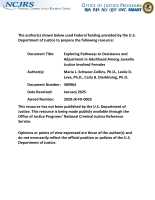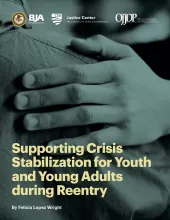Adults (18+)
Trafficker or Trafficked? Predicting Victim versus Offender Status of Female Defendants in Federal Sex Trafficking Prosecutions Using the T.R.A.P. Typology
Sex Estimation Using Sexually Dimorphic Amelogenin Protein Fragments in Human Enamel
Exploring Pathways to Desistance and Adjustment in Adulthood Among Juvenile Justice Involved Females
Constructing Hate Crimes: Does Respondent's Racial/Ethnic Identity Matter?
Guardianship Abuse: Bad Apples or Tip of the Iceberg?
When cases involving high-profile individuals, like Britney Spears, make national headlines, issues surrounding guardianship and conservatorship take center stage. But after those specific cases resolve and national interest fades, the systemic issues remain. We have very little data on how the guardianship system is actually working, and the scope and prevalence of guardianship abuse remains unclear. We don’t know how many individuals suffer abuse under guardianship. We don’t know to what extent guardianship, when properly executed, improves the lives of those it’s intended to serve.
Medicaid and CHIP Changes for Youth in the Justice System
Juveniles Charged in Adult Criminal Courts, 2014
BJS Releases the Juveniles Charged in Adult Criminal Courts, 2014 Report
BJS Releases the Juveniles Charged in Adult Criminal Courts, 2014 Report
The Bureau of Justice Statistics, in the Department of Justice’s Office of Justice Programs, today released Juveniles Charged in Adult Criminal Courts, 2014. This report describes cases filed in adult criminal courts against persons ages 12 to 17 and presents statistics on the demographic characteristics of these juveniles.
Through the Survey of Juveniles...









